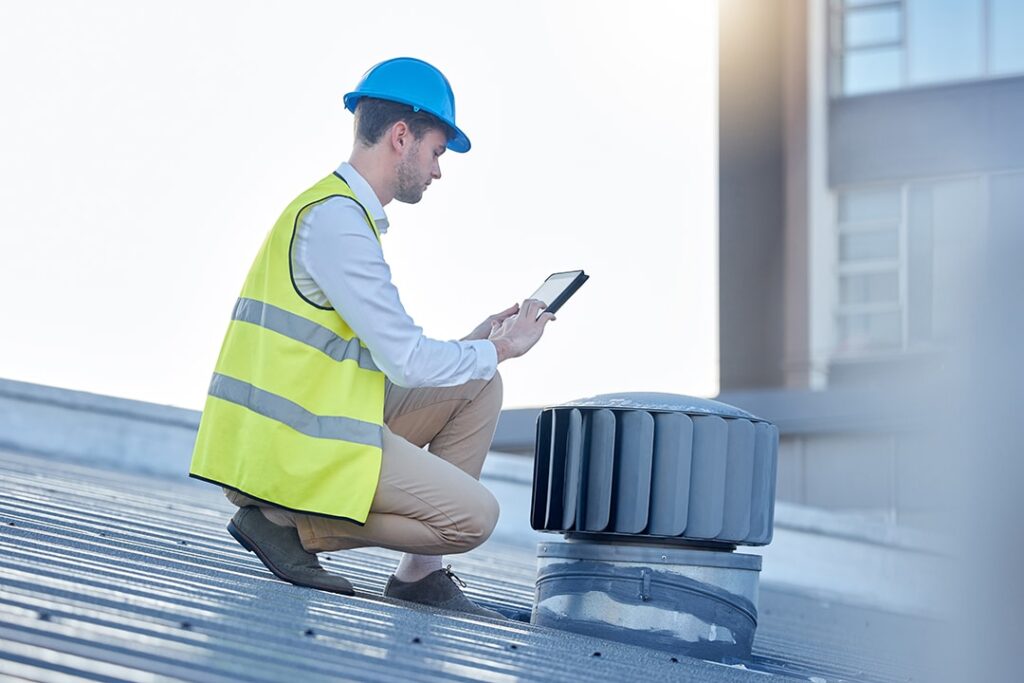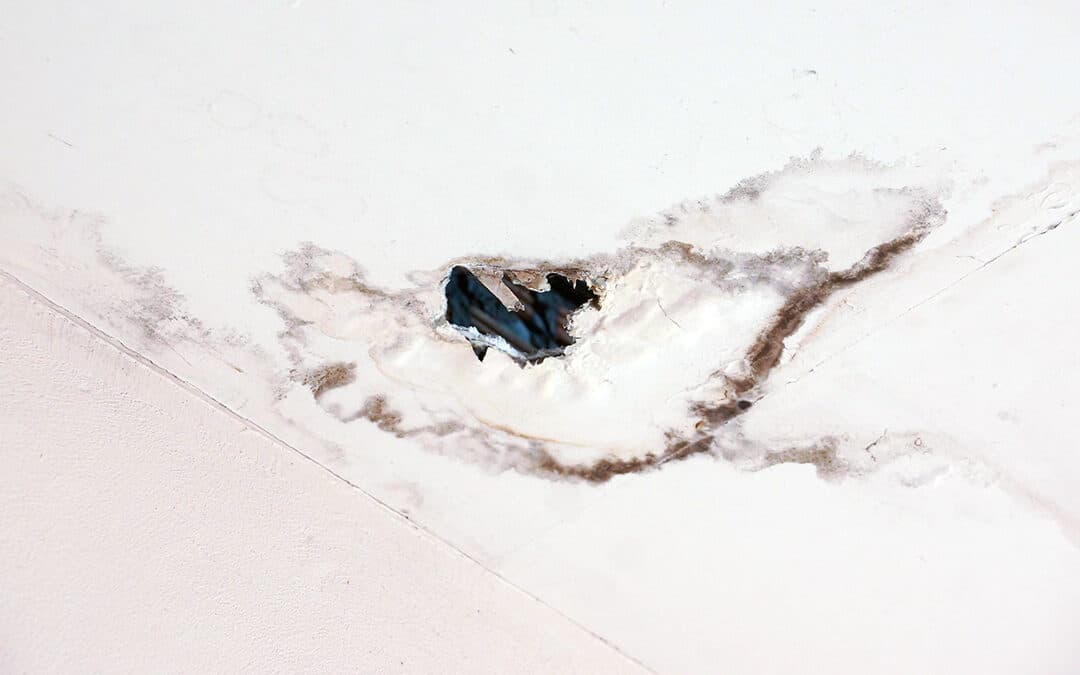Leaking roofs, the dreaded calls to facility managers and the silent but sure issue that directs customers away from your establishment – these are the boogeymen in the commercial property owner’s closet. In the legacy of the building’s age, amidst creeping foliage or with little more than a trickle announcing its presence, a leaky roof can be an ominous forecast for a wet, slippery slope of property damage and subsequent business costs. Therefore, mastering leak detection is a critical skill set for those entrusted with the stewardship of commercial properties.
In this comprehensive guide, we will navigate through the labyrinth of roofing complexities to empower building managers, contractors, and maintenance personnel in becoming proficient sleuths, uncovering the elusive and pesky leaks that threaten to tarnish your commercial establishment’s reputation. Whether the expanse of your property is an industrial warehouse, a bustling office complex, or a community shopping center, this detailed exploration will arm you with the knowledge you need to secure your fortress from the weather’s relentless siege.
Understanding the Anatomy of Your Roof
Before you can detect an anomaly, you must first understand what you are inspecting. The commercial roof is a complex and layered system designed to fortify your building against the elements. Here’s a brief overview of the foundational components:
- Roof Membrane: The outermost layer of the roof, the membrane can be single-ply, multi-ply, or built-up (BUR) roofing. This barrier defends against water and ultraviolet (UV) rays.
- Insulation: Positioned between the membrane and the deck, insulation regulates indoor temperature and protects the roof’s integrity.
- Roof Deck: The structural surface or substructure of the roof. It’s the foundation upon which the roofing system is built.
- Flashing: Flashings are metal pieces used to seal joints in the roof that are more prone to water intrusion, such as edges, corners, and penetrations.
- Drainage System: Roofs are not perfectly flat, or should not be. Water needs a path away from the roof surface, and the drainage system ensures this happens effectively.
Understanding how these components work in unison gives you a baseline for detecting irregularities. Now, let’s dive into the methods for detecting leaks in your commercial roof system.
Investing in Regular Professional Inspections

The first line of defense in leak detection is a well-executed professional inspection. While many entities may be inclined to cut corners, especially when the skies are clear and budgets are tight, staying current with the scheduled inspection regime can prove to be more than worth its weight in gold when it comes to identifying leaks early.
What Role Does Annual Inspection Play?
An annual roof inspection is the equivalent of an annual physical for a human being – it detects possible problems, confirms the overall health, and addresses concerns before they become emergencies. During an annual inspection, a roofing professional will identify areas of wear, check the integrity of seams, examine flashings, inspect for material deterioration, and ensure any rooftop equipment has not caused damage.
The inspector will also review the drainage system, verify that it is free from debris and in proper working order, search for signs of ponding water, and confirm that all roof penetrations are watertight.
Employing the Expert Eye
A seasoned roofing professional can identify signs of water infiltration that are invisible or difficult to discern to the untrained eye.
- Stains: Water stains on the ceiling, walls, or floor below the roof are clear indicators of leaks that should be immediately investigated at the source.
- Material Degradation: Cracked, blistered, or bubbled spots on the roof’s surface are vulnerable points for water penetration.
- Loss of Granule: On asphaltic roofs, a loss of granule material is often a sign of aging or wear that makes the roof membrane more susceptible to damage.
By entrusting the inspection to an experienced professional, you can rest assured that even the smallest clues related to roof leaks will be observed and recorded.
The DIY Damage Audit
In between professional inspections, a proactive property manager can carry out a preliminary damage audit to stay informed and ready to act accordingly. This type of ad-hoc inspection does not replace routine professional inspections but rather supplements them.
What to Look for During a DIY Inspection
During your DIY inspection, you should focus on checking for:
- Ponding Water: Any areas where water collects and does not drain within 48 hours must be investigated as these could be potential leaks.
- Detritus Accumulation: A buildup of debris or biomass on the roof can indicate areas where water has begun to pool or flow irregularly, potentially undermining your roof’s integrity.
- Visible Penetrations: Make sure any openings such as drains, pipe harnesses, and anchor points are properly sealed.
- HVAC / Utility Mounts: Examine these to ensure their integrity and integrity of the sealing around the mount points.
Documenting Your Findings
It is vital to document your findings with detailed notes and photographs. This documentation can serve as a baseline for future comparisons and as proof of your diligence should there be any disputes regarding the detected damages.
Advanced Leaking Detection Techniques

With the foundational inspections and audits as routine practice, advanced detection techniques become invaluable when conventional methods fall short.
Thermal Imaging
Leak detection via thermal imaging is a non-invasive method that can pinpoint the origin of a leak related to temperature irregularities. By using infrared cameras, areas where moisture is present show up as cooler due to the release of latent heat, offering definitive proof of a leak’s location.
However, interpreting these images requires a trained professional, as temperature variations owing to time of day or changes in weather can also affect the scope.
Moisture Meters
For direct measurement of moisture content in a roof, moisture meters are a reliable tool. They can be used for all types of commercial roofs – from BUR to metal – to give a precise measure of moisture saturation in roofing materials.
- Surface Meters: These detect moisture at the surface level, usually up to a depth of 3/4 inch.
- Penetrating Meters: Used to assess moisture deeper into the materials, these provide a more thorough analysis but it means creating small holes for insertion.
Moisture meters require training for accurate interpretation and must be used with caution to avoid unnecessary damage.
Responding to Suspected Leaks
Upon identifying irregularities, respond quickly and methodically. As the adage goes, “A stitch in time saves nine.” The steps you should follow in response to a suspected leak include:
Notifying the Right People
Swiftly notifying the appropriate personnel, be it the roofing contractor or the building owner, is a critical first step in mitigating the situation.
Temporary Measures
Stopgap measures such as using tarps, pails, or unclogging drains can temporarily contain and manage the damage until a permanent solution can be implemented.
Record-Keeping
Keeping a detailed record of the incident, actions taken, and their results is paramount for providing a complete picture for future reference.
Proactive Maintenance Strategies
Strategic, proactive maintenance plans can significantly reduce the incidence of roof leaks. Embracing routine maintenance can extend your roof’s lifespan and curtail leaks.
Cleaning and Clearing
Regularly clearing debris, ensuring gutters and downspouts are clear, and trimming overhanging tree branches can go a long way in preventing water accumulation and flow disruptions.
Material Protection
Coating solutions can offer added protection against water infiltration and UV rays. These should be applied by professionals in accordance with manufacturer specifications.
Attend to Repairs Promptly
Addressing minor repairs promptly is a necessary part of maintenance and can prevent a small issue from becoming a catastrophic leak.
The Human Factor: Educating and Preparing Personnel
Rooftop systems are only as effective as the personnel that maintains them. Providing the right training and education is of paramount importance to a successful maintenance program.
Training Programs
Invest in training for relevant staff to ensure they can competently carry out inspections and respond to leaks appropriately.
Safety Protocols
Safety should always be at the forefront of any roof-related activity. Establishing and reinforcing safety protocols is non-negotiable.
Emergency Response Drills
Conducting regular emergency response drills helps ensure that all involved parties know their roles and responsibilities in the event of a roof leak.
Allweather Roof: Your Partner in Commercial Roof Maintenance
Recognizing the complexity of commercial roof systems and the expertise required to maintain them, Allweather Roofstands as a seasoned partner in your journey towards a leak-free roof. With a commitment to quality, customer satisfaction, and industry-leading practices, we offer a comprehensive range of services to tackle the multifaceted challenges of commercial roofing. From routine inspections to emergency leak response, our operation is characterized by professionalism, efficiency, and a relentless pursuit of excellence. Contact Allweather Rooffor all your commercial roofing needs and let our legacy of service bring you peace of mind in the face of weather’s fury.


